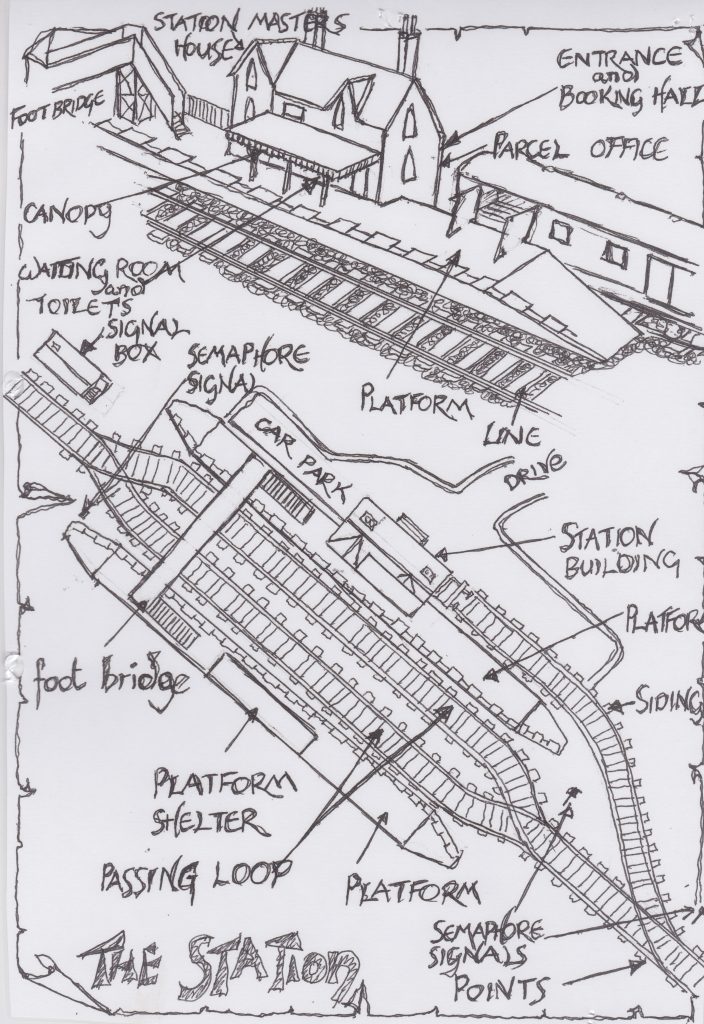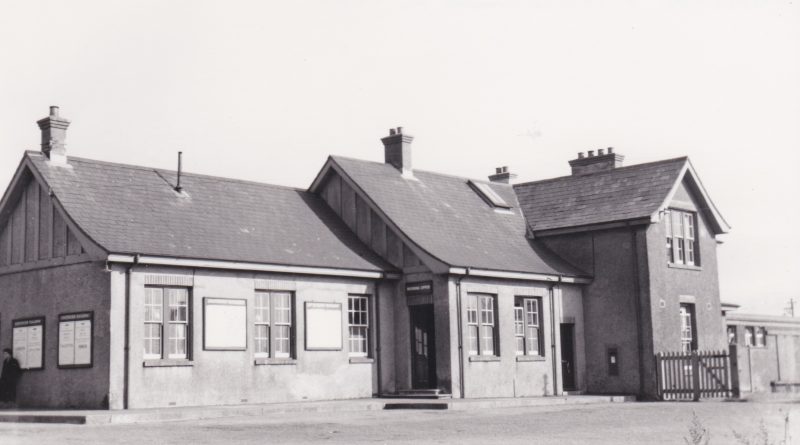A short history of the Barnstaple and Ilfracombe Railway
There were a great many schemes to build a railway line between Barnstaple and Ilfracombe and in the end the two main rival companies, the ‘London and South West Railway’ (LSWR) and ‘Devon & Somerset”, made an agreement in 1864 for a joint mixed gauge railway to be built. The agreement collaspsed when the Devon and Somerset were unable to contribute their share of the money. A new plan was made by the “Barnstaple and Ilfracombe Railway” which was a subsidiary of the LSWR and received its Royal Assent on the 4th July 1870.
It was a hard railway to build. It was harder to raise the money for the line because the “Railway building boom’ was ending and very few new railways were being built. Many labourers had emigrated to America and were busy in the construction of the American Railways and so not enough experienced workers could be found. Between the new junction at Barnstaple and the new Terminus Station at Ilfracombe there were stations at Barnstaple Quay, Wrafton, Braunton and Mortehoe.
A tunnel above the Slade Valley had to be built, an “S” shaped bridge over the Taw at Barnstaple constructed in addition to steep embankments and cuttings along most of the length of the line, except for the section beside the Taw estuary.
When it opened on 20th July 1874 it was a single track light railway and only a special type of light locomotive could be used to pull the trains along the line. Later, between 1889 and 1891, when the line proved popular and financially successful, it was upgraded to a double track. The construction of a double track line required rebuilding most of the stations and bridges along the line, and cutting a second tunnel at Slade.
Between Ilfracombe and Mortehoe stations was one of the steepest sections of the railway line in the country with a gradient of 1-in-36. Ilfracombe was a terminus station and the climb from Ilfracombe up to Mortehoe needed two steam locomotives to pull any passenger or goods train up the gradient. The famous ‘Named’ holiday trains: the ‘Atlantic Coast Express’ and the ‘Devon Belle’ both started and terminated at Ilfracombe Station and in its hay day, in the mid 1930’s, the Barnstaple/Ilfracombe Line was very popular and successful.
On the 1st July 1905 the Barnstaple Easter Spur was opened creating a triangular junction outside the Great Western Railways (GWR’s) station in Barnstaple. This allowed Taunton/Ilfracombe trains to by pass the LSWR ‘Town’ station. GWR played an important part in the development of Ilfracombe because the journey time from Paddington was much quicker than that from Waterloo.
After the Second World War there was a gradual increase in the number of cars on Britain’s road and passenger numbers dropped as people preferred to use their cars rather than travel by train. After a century of providing communications and bringing much-needed revenue in North Devon the future of the Barnstaple/Ilfracombe line was in danager. The line nearly closed as a result of the Beeching Reshaping of British Railways report of 1963 when many unprofitable lines were closed but it was in May 1967 when, under the Labour Minister of Transplant Barbara Castle, the report “The Network for Development Plans’ was published. These plans advised that profitable lines be developed and upgraded, that unprofitable lines serving specific social needs should be subsidized in order to keep them running and any other unprofitable, unnecessary lines would be closed. Ilfracombe fell under the last category and was closed.
Slow Train
By Flanders and Swann
Slow train was a song written in 1963 lamenting the closure of many British railway stations and lines due to the Beeching cuts and with it the disappearance of a way of life because of cars, roads and motorways. Mortehoe was mentioned in the song.
Miller’s Dale for Tideswell …
Kirby Muxloe …
Mow Cop and Scholar Green …
No more will I go to Blandford Forum and Mortehoe
On the slow train from Midsomer Norton and Mumby Road
No churns, no porter, no cat on a seat
At Chorlton-cum-Hardy or Chester-le-Street
We won’t be meeting again
On the Slow Train.
I’ll travel no more from Littleton Badsey to Openshaw
At Long Stanton I’ll stand well clear of the doors no more
No whitewashed pebbles, no up and no down
From Formby Four Crosses to Dunstable Town
I won’t be going again
On the Slow Train.
On the Main Line and the goods’ siding
The grass grows high
At Dog Dyke, Tumby Woodside
And Trouble House Halt.
The sleepers sleep at Audlem and Ambergate.
No passenger waits on Chittening platform or Cheslyn Hay
No one departs, no one arrives
From Selby to Goole, from St Erth to St Ives
They’ve all passed out of our lives
On the Slow Train, on the Slow Train.
Cockermouth for Buttermere …
On the Slow Train, Armley Moor Arram …
Pye Hill and Somercotes …
On the Slow Train
Windmill End.

Main Line:
These are the railway lines that carry passenger and freight rail traffic around the country. Usually there are two sets of lines so that trains can travel in either direction at the same time, often at high speed.
Branch Line:
The Barnstaple and Ilfracombe Line was a Branch Line. A Branch line is joined to a Main Line at one end and the other end goes to a town often ending (terminating) at the last station. Ilfracombe was a Terminus Station and trains could therefore not go beyond Ilfracombe. Along the Branch Line were small stations serving nearby villages (like Mortehoe). In the 1950’s and 1960’s many Branch Lines were closed because they were thought to be unprofitable. The Barnstaple and Ilfracombe Lines closed at the end of the 1960’s
